The percentage of Americans moving over a one-year period fell to an all time low in the United States to 11.2 percent in 2016.
Get Started for FREE
Sign up with Facebook Sign up with X
I don't have a Facebook or a X account
 Your new post is loading... Your new post is loading...
 Your new post is loading... Your new post is loading...

London Kassab's curator insight,
November 3, 2015 9:35 PM
Mexico is having a lot of internal migration within cities. Many different languages are disappearing and for a lot of the people literacy, racism, and other forces can often bring them to urban areas. Also the border isn't the only hope for migrants, bustling cities offer hopes of better lifestyle as well. L.K.
Clayton Nelson's curator insight,
December 16, 2015 11:14 AM
I believe migrants should be allowed to migrate to their destination. But there should of course be policies as to how many people come to one area at a time and such. In my opinion the main problem lies with those who exploit the border and migrate illegally as well as those who don't belong such as terrorists. Once this is resolved migration from Mexico to the United States or to anywhere will be much smoother. CN
tyrone perry's curator insight,
March 23, 2018 12:44 PM
The internal migration going on in Mexico is mainly comprised from the indigenous communities. They think that if they move to the city they can better their lives by getting an education and a wealthy paying job. But as they soon find out there is more problems than jobs and education. many of the personal videos show the hard path many of the people endure with very little success.

Aleena Reyes's curator insight,
April 8, 2015 9:21 PM
Even though this article is now three years old, it is refreshing to see that Mexico is really making their mark on the global market. The Global North seems to be coming to a stalemate while "up and coming countries" like Mexico are becoming the perfect place for people to begin their businesses and have a fresh start on life. I can understand though, how it was mentioned on the third page of the article, that some locals may feel that foreigners, European especially, may be receiving some type of special treatment due to past colonialism. However, these entrepreneurs are shaping the economy of Mexico. This is Mexico's chance to advance in the world and increase its GDP. Young, aspiring moguls all seems to feel the same way about their homelands, "Europe, dying; Mexico, coming to life. The United States, closed and materialistic; Mexico, open and creative" and Diego Quemada-Diez, a Spanish director, was quoted in the article, "Europe feels spiritually dead and so does the United States...[y]ou end up wanting something else". And apparently, Mexico has that "something else".

Chris Costa's curator insight,
September 21, 2015 10:25 AM
Again, I would be interested in seeing how these statistics would change if they were to factor in illegal immigration from Mexico into the United States, but the data remains promising. Mexico has the potential to be an economic powerhouse, and hopefully will utilize this potential sooner rather than later. Although rampant corruption remains in the nation's politics and reinforcement agencies, a strong Mexican economy will ultimately deescalate the violence by stripping the cartels of their strongest allure- well-paying employment for uneducated young men. A stronger Mexican economy will also undoubtedly help the US in terms of trade, as well as reducing the rate of cartel-related violence in the southern regions of the nation. With so many Americans today rallying around Trump's racially-charged rants on Mexican immigration, it brings a smile to my face that we are currently sending more Americans to take Mexican jobs than they are sending our way. The hypocrisy of these politicians and their policies are laughable.
BrianCaldwell7's curator insight,
April 5, 2016 8:20 AM
I’ve posted earlier about the end of cheap China; the rising cost of doing business in China coupled with the higher transportation costs to get goods to North American and European markets have made manufacturing in Mexican much more competitive on the global market. Many investors are turning to Mexico as an emerging land of opportunity and Mexico is now a destination for migrants. This is still a new pattern: only 1 percent of the country is foreign-born compared to the 13 percent that you would see in the United States. Mexican migration to the United States has stabilized; about as many Mexicans have moved to the U.S. (2005-2010) as those that have moved south of the border. Tags: Mexico, industry, location, place, migration.

Meagan Harpin's curator insight,
September 28, 2013 3:39 PM
The most surprising piece of information in this article is that white Britons are leaving London because of the minorities that are moving in. As of 2013 only 59.9% of London was white, meaning that the miniorities are taking over Ethnic part of London much faster then first anticipated. 
Joseph Thacker 's curator insight,
March 29, 2014 5:43 PM
Since immigrants have flocked into London, it appears some of the White population has left the city because of it. The ethnic change is happening very quickly in London and White British population is no longer the majority. As large numbers of immigrants enter London, large numbers of White people leave the city. London is becoming a melting pot rather quickly.
Wilmine Merlain's curator insight,
December 18, 2014 2:40 PM
If white flight is happening in Europe, where are all of its native migrating to? I know for years, there has been a large migrant population from the continent of Africa migrating to Europe, more specifically London, but where in the world could Britain's native be migrating to? Its common to hear of people migrating from rural areas to better neighborhoods, but with the influx of people looking for a better livelihood resemble that of the people living in countries such as India, China and Japan?

geographil's curator insight,
February 5, 2013 8:52 PM
great interactive guide from the guardian on the flow of remittances around the world.

Mr Ortloff's curator insight,
January 22, 2013 12:20 AM
Good source for stats on non-voluntary migrants.
Lauren Sellers's curator insight,
May 22, 2014 12:04 PM
This is an interesting little chart because it reveals to us which countries have the highest percentage of migrants that make up their general population. Definitely suprised me to see Qatar as the number one on the list, I would have expected the US to be at the top, but it is not even in the top 10!
Lona Pradeep Parad's curator insight,
May 28, 2014 7:26 PM
This shows the net migration of immigrants.
Adrian Bahan (MNPS)'s curator insight,
September 30, 2014 4:04 PM
Remember this is based on a % of the total population, and not total #. Which countries have the most migrants per capita living there? What spatial or development patterns do you see on this list?
Macy Nossaman's curator insight,
September 20, 2013 2:26 PM
This is a good article about immigrants in America because it talks about all of the different places people have immigrated from and now live and work in the U.S. Since my topic is European Immigration, It shows that there are 2.4 million Europeans currently working in the U.S.
Laurel Stelter's comment,
September 27, 2013 2:23 PM
I think that this is a really interesting article. The two pictures really help define America and its workplace well. It surprised me how many people weren't born in the U.S., but still work here.

Rayden Duncan's curator insight,
October 2, 2013 11:38 AM
This relates to my topic in that it shows how the united states populaction moved into urban settings. It show cities are generally showing an increases in population. poeple would move to cities to find jobs or shorter commute.
Aleasha Reed's curator insight,
October 2, 2013 12:16 PM
This is a map that shows the rate of change in the U.S., population wise. The most growth occured on the western and eastern coast's. There were a few places with a decreasing population.
WalkerKyleForrest's curator insight,
September 16, 2013 10:10 AM
My insight on this would be how that Latin American countries have more educated people than other countries, then they spread to surrounding counties, providing many challenges and opportunities. Some opportunities would be that speading education would bring jobs. And the challenges would be the issue of mixing diversities, which could cause stds and gene mutations.- walker 
Elizabeth Bitgood's curator insight,
February 6, 2014 11:46 AM
This article points out how when the pattern of immigration shifts it creates new challenges for the country of immigration, even if it is internal migration as opposed to external migration. The path and flow of people moving from place to place can change the shape and nature of a country.
Gareth Jukes's curator insight,
March 24, 2015 12:52 PM
Consequences of migration: socioeconomic, cultural, environmental, and political; immigration policies; remittances- This article speaks of how migratory patterns are changing for illegal immigrants, and how it is causing problems. It states that as more countries and cities are exploited, their needs to be more jobs created. Sometimes, even new immigration policies are needed.
This article portrays the idea of consequences of Migration because it speaks of what those nations must do in order to thrive and survive the wave of illegal immigrants. |

Ignacio Garrido's curator insight,
December 13, 2016 9:20 AM
Look at the picture :
a. Write the countries with the most and the less people who change their countries. Explain if They are leaving or coming to different countries. b. Could you undestand whiches causes could be the rigin in each country ( Ex : war, poor...) Good Luck
Gareth Jukes's curator insight,
May 27, 2015 12:31 PM
Push and pull factors, and migration in relation to employment and quality of life- This article explains how China in 2013 had more immigrants going to the US than Mexico. The reasons why were because of jobs and better life styles in the US. This article represents push and pull factors, and migration in relation to employment and quality of life by showing why china had more immigrants going to the US because of job opportunities and better life styles. 
Chris Costa's curator insight,
September 20, 2015 10:18 PM
I can already imagine the reactions I would receive from a couple of people I know if I were to post something like this on Facebook. Too often, popular opinion trumps fact, which contributes to the continued existence of stereotypes and inherently racist beliefs/institutions. I find it particularly humorous that the bulk of anti-immigration sentiment is cast at the Hispanic-American population now knowing that they do not even compromise the largest immigrant populations now entering the country! It makes it painfully obvious that this hate of Hispanic immigrants held by many Americans is less about "job security" and more about racism. I will, however, point out that the census bureau doe not account for illegal immigration to my knowledge, and I would be interested to see how this would affect the data presented in this article.

Al Picozzi's curator insight,
August 4, 2013 1:45 PM
Awesome way to show how the settlement of the US continues to move west with the population growing on the West Coast at a faster rate. If you look at the biggest jump between 1850 and 1860 it shows the mass immigration into the US and the further migration to the western part of the US especailly with the gold rush starting in 1849. Great littel piece of information.
Blake Welborn's curator insight,
November 11, 2013 10:33 PM
Informative, short podcast that details the changing migration of the US. This allows for the comparison of migration and time and the effects of migration over the years in the US.
Emily Bian's curator insight,
October 17, 2014 7:32 PM
The center of the U.S. population moves about every 10 years. In our APHUG textbook, it also talked about the center moving west. It also talks about the patterns and shifts of migration in the U.S going more west and south now, than before. I wonder if the trend will continue? It relates because we talked about this map in APHUG class, and it was in the textbook. The population trend is moving Southwest. This is interesting for next year's APHUG students, because they get to see a population trend right in the US! It's a good article to think about why population trends are the way it is. 2) migration

Sierra_Mcswagger's curator insight,
September 10, 2014 10:02 AM
This video is primarily talking on the widely known topic of migration. 3 percent of the worlds population is living away from there place of birth. The push of migration from places include poverty, war, and environmental disasters. The migration pull in some places are because of economic opportunity, and political freedom. Migration is increasing, and is thought of as a bad thing.(s.s.) 
Aurora Rider's curator insight,
October 7, 2014 8:59 PM
This video is great for going over the many different aspects that go along with migration. It talks about what migration is and the reasons why people migrate known as push and pull factors. It talks about the different types of migration such as asylum seakers and illegal immigration. It mentions the disadvantages and advantages of migration.
Katelyn Sesny's curator insight,
October 31, 2014 12:27 PM
A great YouTube video- discussing the controversy of international migration among other things that fall into place of the disapproval of international migration. -UNIT 2

Araceli Vilarrasa Cunillé's curator insight,
February 8, 2013 4:14 AM
Es un grafic molt atractiu. Interessant per muntar treballs de grup, investigants païssos concrets
Anhony DeSimone's curator insight,
December 18, 2013 10:07 PM
Migration is what is need in order for the human race to relate to one another and survive. This shows us how we can learn form Migration from a geographical stand point. If you look at the Geography of how and where people move you will it will help you to develop a sense of what is next to come or what is needed to survive.

jada_chace's curator insight,
September 10, 2014 9:47 AM
Refugees are found in a large percent of Earth’s surface. Some people chose to migrate, while others are forced. Some leave their home in order to get away from their country, for example due to a war. Many flee to nearby countries and are afraid to return to their hometown because they are frightened of what might happen if they go back. Another reason many refugees leave their country is due to environmental problems and the people cannot afford to live in that country.
Elle Reagan's curator insight,
October 17, 2014 1:31 PM
I felt like this article was very relevant to our Unit 2, Population. We have talked about refugees and migration in a great deal and I thought this map was a good visual. I also liked the information it provided about what refugees really are and that they are really a part of the world migration pattern.
Katelyn Sesny's curator insight,
October 31, 2014 12:31 PM
Refugees are often thought of as those with the "refugee problems" they face, the problems they create and the constant struggle they possess of never being able to go home for the political/religious dispute in their homeland. However this articles goes into depth of the definition of a refugee and furthermore focuses on the topic of "environmental refugees' who are forced to get up and leave their land due to soul degradation, flooding, etc. - UNIT 2

Jess Deady's curator insight,
April 17, 2014 3:25 PM
This is an important lesson, especially for those who actually live in Arizona/Mexico and have seen the border itself. Learning about the Arizona/Mexican border is important and shouldn't be left solely to teaching it only in those areas. The maps included in the lesson plan are efficient and could be used in the high school setting.

Jason Schneider's curator insight,
February 3, 2015 4:09 PM
When it comes to ethnic groups in the United States, many of the hispanic/mexican ancestors occur in the southwestern area of the United States. That's obviously because Mexico is southwest of the United States. When it comes to emigrating from Mexico, individuals immigrate to the United States (mostly southwest of the United States) so they can live a different, hopefully better economy. Plus, they try to escape the gang violence and drug violence in Mexico.
Alexa Earl's curator insight,
March 14, 2015 1:05 PM
This is a good representation of chain migration. 
Lindsay Hoyt's curator insight,
June 26, 2017 11:32 PM
Gives a visual of migration trends and can connect to current events or historical events. |




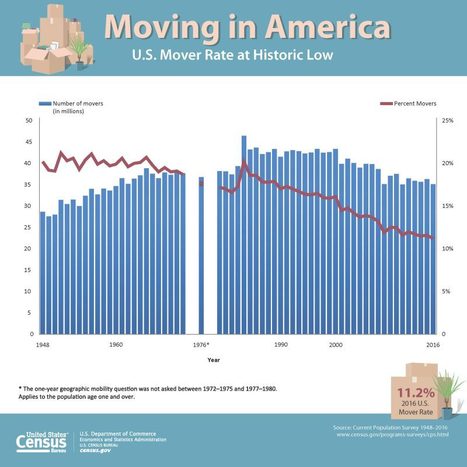

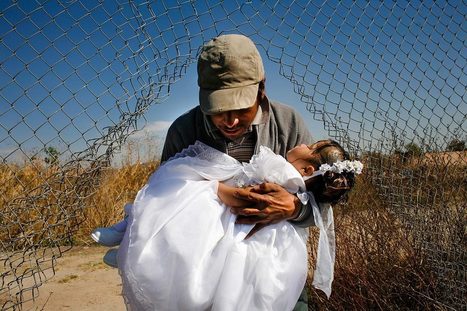
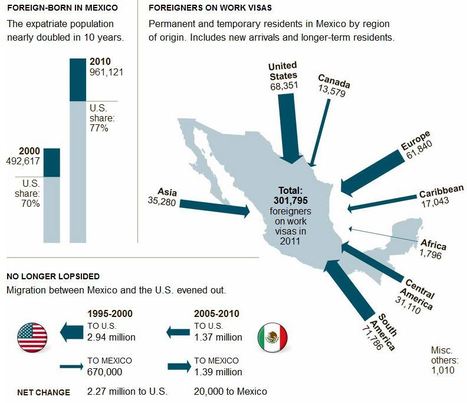
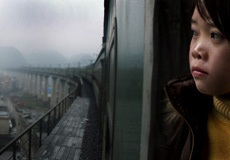

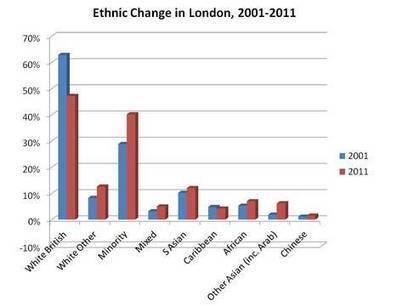
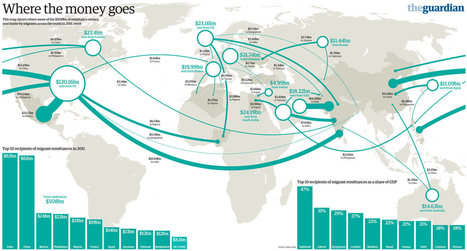
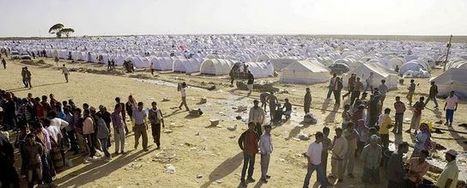
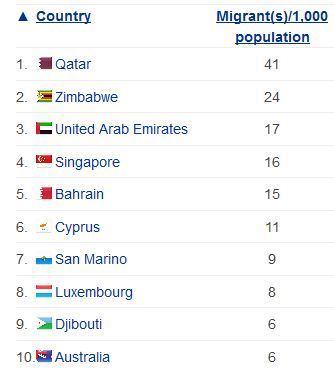
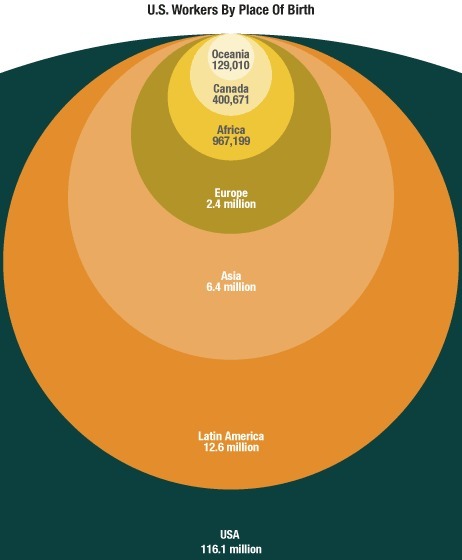
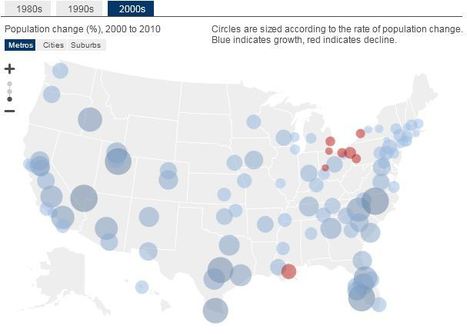
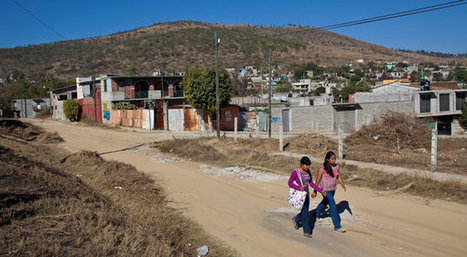
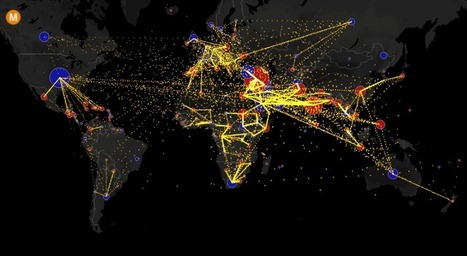


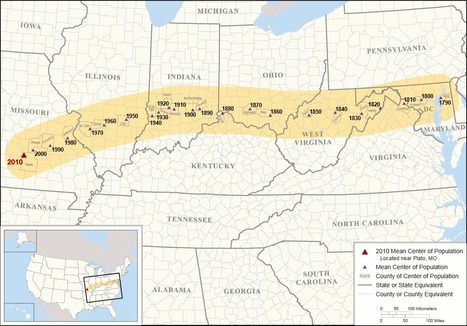
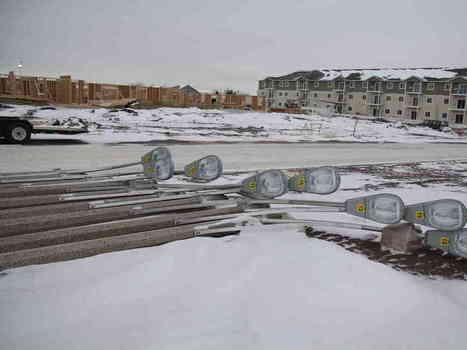
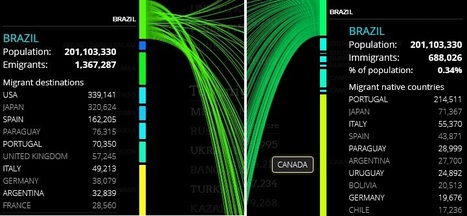

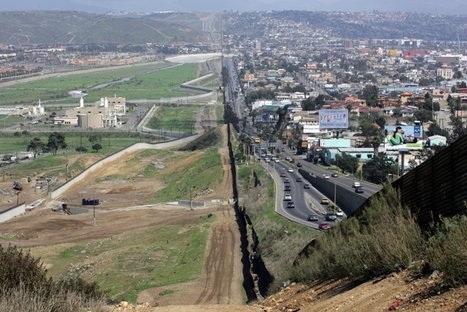

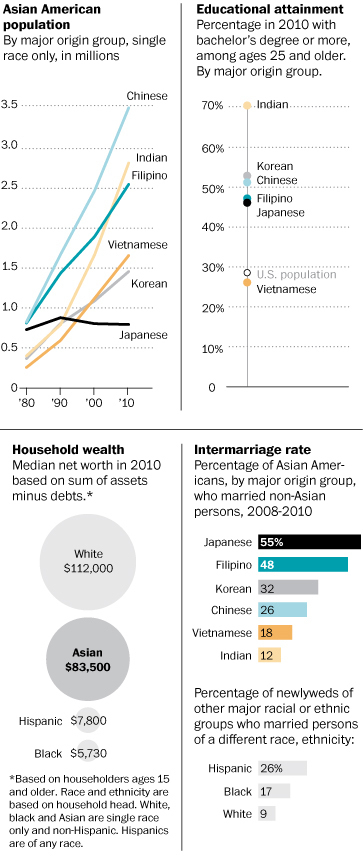
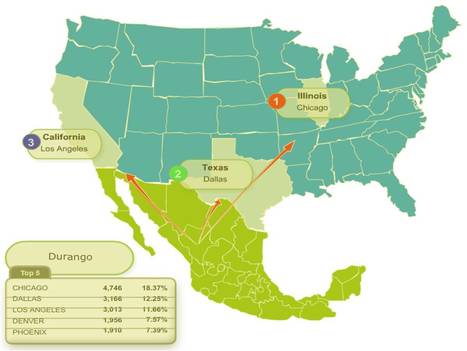





Internal migration in USA can make an interesting comparison with Australia
Syllabus
Internal migration
Students investigate reasons for and effects of internal migration in Australia and another country, for example:
Geoworld 9 NSW
Chapter 7: Urban settlement patterns Australia and USA
Chapter 8: Migration changes Australia and USA
8.8 Australians are mobile people
8.9 Mobile indigenous populations
8.10 Lifestyle migration
8.11 The power of resources
8.12 Migration changes the USA